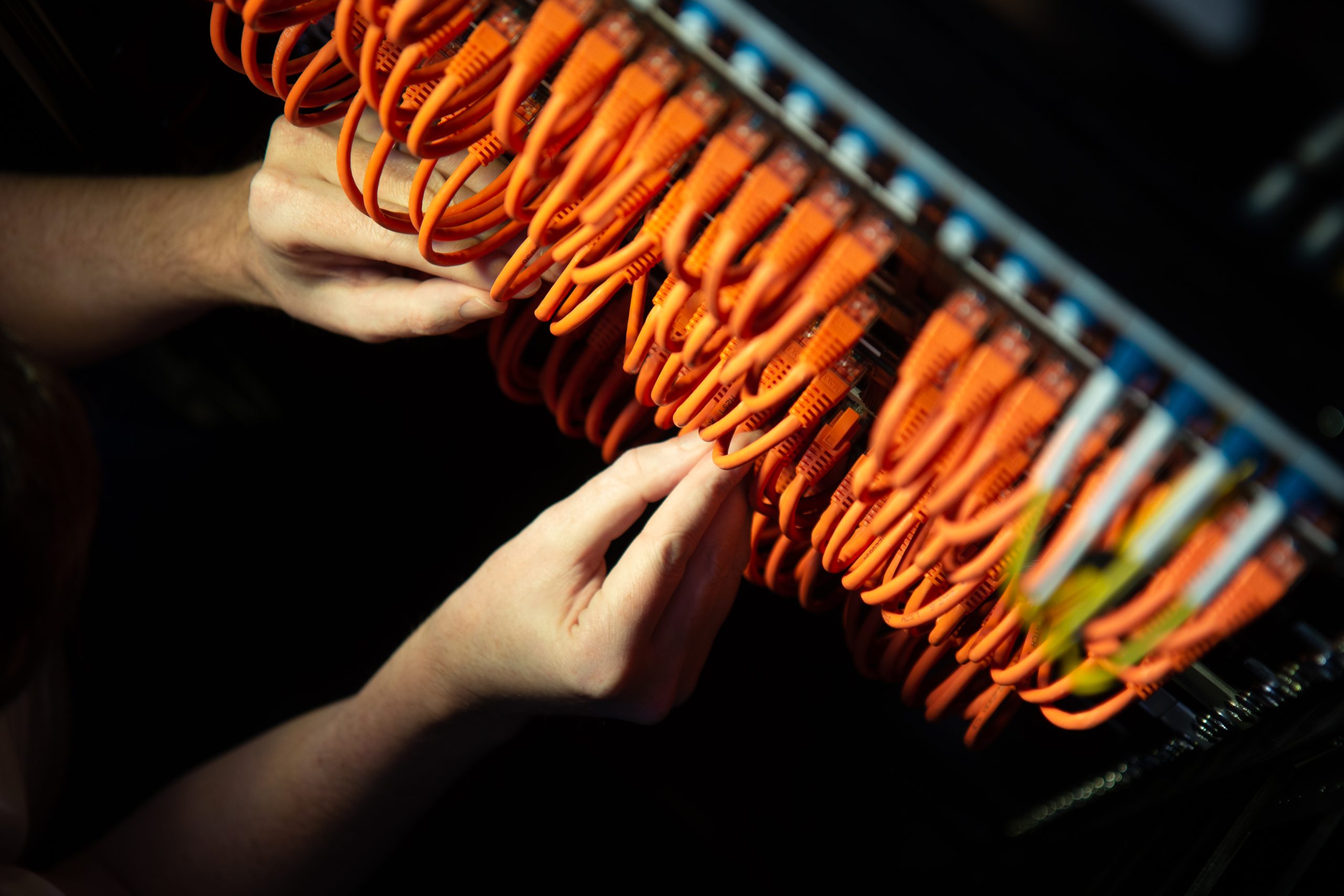Structured Cabling Explained

The use of structured cabling is gaining in popularity across a diverse range of industries. Recognised for its superior networking capabilities, power reducing capacity and enhanced level of flexibility, structured cabling requires less maintenance than its traditional point-to-point counterpart making it suitable for use across a broad range of infrastructural requirements.
The growth in new technologies, applications and Internet of Things (IoT) devices is pushing the demand, particularly across industrial and commercial sectors. According to the United Kingdom Connected Nations Report, the UK is now the leading structured cabling market across Europe and it is easy to see why. With the growth of IoT connections across identified sectors expected to reach over 150 million by 2024, companies are increasingly looking for solutions that are flexible and scalable to accommodate the changes that are evolving within technology.
So how exactly does a structured cabling system work? And how does it differ from a traditional point-to-point cabling system?
As infrastructure and connectivity specialists, these are questions we are regularly asked at Technology Powered Services (TPS). In light of this, we thought we would take a little time to explain the difference between the two types of system and also the benefits that can be gained from incorporating structured cabling into the workplace infrastructure.
What Is A Point-to-Point Cabling System?
A point-to-point cabling system is constructed using direct connections. For example a jumper cable connects one device such as a switch, server or storage unit, directly to another device. The addition of other devices or upgrades to equipment will generally result in running a further cable.
This ‘spaghetti cabling’ effect can create a confusing mass of unsightly and bulky wires which reduces airflow, placing stress on the cables and negatively affecting the life of any connected hardware.
How Does This Differ To A Structured Cabling System?
A structured cabling system uses a Main Distribution Area (MDA) that all connections run from. This forms the central point of distribution.
The cables connect to patch panels, which in turn connect to varying components such as switchers, routers and firewalls. Structured cabling systems provide a reliable and secure connection between computers, phones, printers and other electronic devices to facilitate communication between them.
Each system design will be unique due to the variations in:
- Architectural structure of the building
- The cable type used (copper or fibre structured cable)
- Function of the installation and the type of equipment it will support
- The configuration of any installed system
- Customer requirements
There are two main cabling methods that can be incorporated into the infrastructure design:
- Backbone
- Horizontal
Backbone Cabling
The main function of backbone cabling is to provide interconnections. It can be separated into two types; inter-building and intra-building.
Intra-building backbone cabling delivers interconnections between entrance facilities, equipment rooms and telecommunications rooms. It is usually installed from floor to floor but can also be installed between IT rooms on the same floor.
Inter-building backbone cabling, on the other hand, is installed between buildings.
The essential components of backbone cabling include:
- Cable pathways to provide routing spaces for the cabling, which can incorporate shafts, conduits, raceways or floor penetrations such as sleeves or slots
- Connecting hardware (patch panels, connecting blocks, interconnections or cross-connections)
- The backbone wiring, which could be optical fibre, coaxial, twisted-pair copper or a combination of all three
Horizontal Cabling
Horizontal cabling will extend from a telecoms room or similar to individual workstations or hot desks on the same floor. Unlike backbone cabling that will run between floors, horizontal cabling will not.
It is usually installed in a star topology that connects each work area to the telecoms room and will include the telecoms outlet, an optional consolidation point, horizontal cable, mechanical terminations and patch cords or jumpers located in the telecoms room.
Copper cabling (CAT5e, CAT6 and CAT6a) is the most commonly used cable for horizontal purposes however fibre optic and coaxial cables may also be used.
Benefits Of Installing A Structured Cabling System
A structured cabling system makes optimal use of space, due to the overall reduction in footprint.
Flexible and scalable, it can easily accommodate changes in technology over time. Due to the system’s modular design it is relatively simple to add further patch panels to create new connections therefore any additional hardware that needs adding or removing at a later date can be done with ease.
The organised and neat cabling system reduces the threat of downtime from human error, where the wrong cable becomes disconnected during a move. This reduction in overall cable bulk also minimises the potential for blocked airflow and crushed cables, which as mentioned earlier, can have a negative effect on any associated equipment.
Designed for optimum performance, structured cabling systems allow for faster data transfer speeds than traditional networking solutions. With each device on the network having an optimal connection point, files and applications can be accessed both quickly and securely. The advantage this brings ensures the systems are suitable for a range of industries and sectors that now rely heavily on technology, including; IT, telecoms, data centres, residential, retail, industrial, transport, distribution and logistics.
Perhaps, one of the greatest benefits of a structured cabling system however is that it offers a greater Return-On-Investment (ROI) than traditional point-to-point wiring methods. The modular design promotes longevity of the infrastructure due to its scalability and allows for multiple generations of hardware and upgrades to be applied as and when needed.
Daily operating costs are lower thanks to the organised cabling system, as this reduces the need for cooling in areas where point-to-point ‘spaghetti cabling’ leads to overheating. Installation and maintenance times are also significantly reduced, promoting ‘uptime’ in the system’s availability and keeping all parties and devices connected.
Interested In Finding Out More?
The engineering team at TPS has a wealth of experience designing and installing structured cabling systems for both new build and existing premises.
Our experience spans a variety of sectors; including Corporate Workspaces, Retail, Education, Hospitality, Data Centres, Residential, Critical Environments, Distribution and Logistics.
If you would like to find out more on how we can help your organisation benefit from a structured cabling solution, please call a member of the team on 0161 660 9974.
TPS (Technology Powered Services) has an industry wide reputation for delivering exceptional infrastructure, connectivity and technological solutions. The company also offers a comprehensive range of Break-Fix, Testing and Maintenance services including reactive 24/7 Engineer Call-Out with guaranteed response times.

